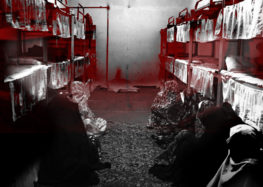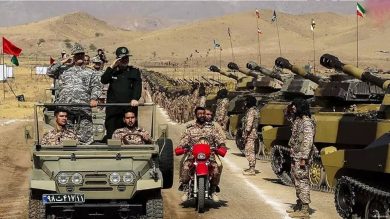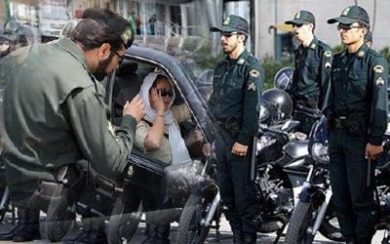The Islamic Revolutionary Guard Corps (IRGC), known for its military, economic, and political influence, has also emerged as a dominant force in the realm of digital warfare. The IRGC uses advanced cyber capabilities to suppress dissent, spread propaganda, and control narratives both within Iran and internationally. Through online censorship, misinformation campaigns, and cyberattacks, the IRGC exerts its influence over the digital landscape, stifling free expression while bolstering its ideological goals.
This article examines the IRGC’s role in digital warfare, its methods of suppressing voices and spreading propaganda, and the broader implications for freedom of speech, global security, and human rights.
The IRGC’s Role in Digital Warfare
The IRGC operates as both an enforcer and architect of Iran’s cyber strategy, targeting internal dissent while projecting its influence globally.
1. Cyber Capabilities and Infrastructure
• Cyber Units: The IRGC oversees several cyber units, including the Basij Cyber Council, tasked with monitoring and controlling online spaces.
• Technological Development: The IRGC has invested heavily in cyber technologies, enabling it to conduct advanced surveillance, cyberattacks, and misinformation campaigns.
2. Controlling Iran’s Digital Space
• The IRGC works closely with government entities to restrict internet access, block platforms, and monitor online activity.
• It enforces strict censorship laws, ensuring that only state-approved narratives dominate Iran’s digital landscape.
Methods of Suppression and Propaganda
1. Internet Censorship
• Blocking Platforms: Major social media sites like Twitter, Facebook, and YouTube are banned in Iran, with access restricted through advanced filtering technologies.
• Surveillance and Monitoring: The IRGC tracks online activity, identifying activists, journalists, and dissenters for potential targeting and arrest.
• Internet Blackouts: During protests or unrest, the IRGC implements nationwide internet shutdowns to suppress communication and prevent the spread of information.
2. Propaganda Campaigns
• Social Media Manipulation: The IRGC operates fake accounts, troll farms, and bots to spread pro-regime narratives, discredit dissenters, and amplify misinformation.
• State Media Amplification: IRGC-controlled media outlets, such as Tasnim News Agency and Fars News Agency, disseminate propaganda supporting the regime’s policies and framing dissenters as foreign agents.
3. Cyberattacks
• Targeting Activists and Journalists: The IRGC launches phishing attacks and hacks into accounts to intimidate and silence opposition voices.
• International Targets: The IRGC conducts cyberattacks on foreign governments, organizations, and companies to gather intelligence, disrupt operations, and retaliate against perceived threats.
4. Disinformation and Misinformation
• Creating Fake Narratives: The IRGC spreads false information to confuse audiences, undermine protests, and delegitimize opposition movements.
• Blaming Foreign Powers: Protesters are often portrayed as agents of the West, Israel, or Saudi Arabia, creating division and reducing public support for resistance movements.
The Impact on Iranian Society
The IRGC’s digital warfare has far-reaching consequences for Iranian society, restricting access to information, suppressing free expression, and eroding trust in public discourse.
1. Silencing Dissent
• Activists, journalists, and ordinary citizens face arrests and harassment for their online activities, stifling free expression and creating a climate of fear.
• Internet blackouts during protests prevent Iranians from organizing, communicating, and sharing evidence of state violence.
2. Misinformation and Distrust
• The spread of propaganda and disinformation by the IRGC erodes trust in information sources, making it difficult for Iranians to discern truth from regime-manipulated narratives.
3. Economic and Educational Impact
• Internet restrictions and censorship hinder access to global knowledge, limiting opportunities for education, innovation, and economic growth.
Global Implications of the IRGC’s Digital Warfare
The IRGC’s cyber activities extend beyond Iran’s borders, influencing global security and democratic processes.
1. Targeting the Iranian Diaspora
• Iranian activists and journalists abroad are frequently targeted by cyberattacks, phishing schemes, and harassment campaigns orchestrated by the IRGC.
• Disinformation campaigns aim to discredit diaspora organizations and movements advocating for human rights in Iran.
2. Interfering in Foreign Politics
• The IRGC conducts cyber operations to influence elections, spread divisive narratives, and undermine democratic institutions in other countries.
• Misinformation campaigns often promote anti-Western sentiment, aligning with the regime’s geopolitical goals.
3. Threatening Regional Stability
• The IRGC uses its cyber capabilities to target regional adversaries, such as Saudi Arabia and Israel, escalating tensions and destabilizing the Middle East.
Resistance to the IRGC’s Digital Warfare
Despite the IRGC’s efforts to dominate the digital landscape, Iranian citizens and global activists continue to resist its control.
1. Digital Tools and Circumvention
• VPNs and Proxy Servers: Iranians use VPNs and other tools to bypass censorship and access blocked platforms.
• Encrypted Messaging Apps: Platforms like Signal and Telegram allow activists to communicate securely, despite government surveillance.
2. Global Advocacy and Support
• International Tech Support: NGOs and governments provide tools, training, and resources to help Iranians bypass censorship and protect their digital privacy.
• Amplifying Voices: Social media campaigns, such as #IranProtests and #MahsaAmini, amplify the voices of Iranian activists, countering regime narratives.
3. Independent Media
• Exiled Iranian journalists and media outlets play a crucial role in exposing the regime’s abuses and providing uncensored information to Iranians and the global community.
How the World Can Respond
The international community has a vital role in countering the IRGC’s digital warfare and supporting freedom of expression in Iran.
1. Sanctions and Accountability
• Targeted sanctions on IRGC-affiliated individuals and entities involved in cyber warfare can limit their operations and financial resources.
• Governments should pressure technology companies to prevent the IRGC from exploiting their platforms.
2. Promoting Digital Freedom
• Providing Iranians with access to circumvention tools, secure communication platforms, and digital literacy training is essential to countering censorship.
• Global tech companies must strengthen protections for activists and ensure their platforms cannot be weaponized by the IRGC.
3. Exposing Disinformation
• Governments and organizations should invest in fact-checking initiatives to counter the IRGC’s disinformation campaigns.
• Raising public awareness about the IRGC’s tactics can reduce their effectiveness and build international solidarity.
Conclusion
The IRGC’s digital warfare is a cornerstone of its strategy to suppress dissent, manipulate narratives, and project power both within Iran and globally. By controlling the digital landscape, the IRGC stifles freedom of expression, spreads propaganda, and undermines democratic values. However, the resilience of Iranian citizens, combined with global support for digital freedom and human rights, offers hope for resistance. The international community must act decisively to counter the IRGC’s cyber influence and empower the Iranian people in their fight for freedom and justice.
Join Our Newsletter!
Stay informed with the latest updates, news, and ways to take action in the fight for justice and global security. Sign up now to get updates delivered straight to your inbox!





